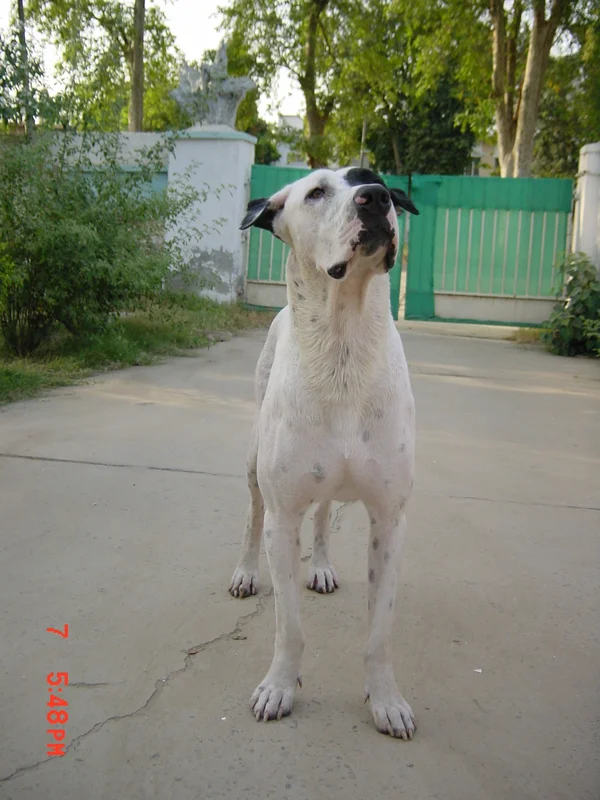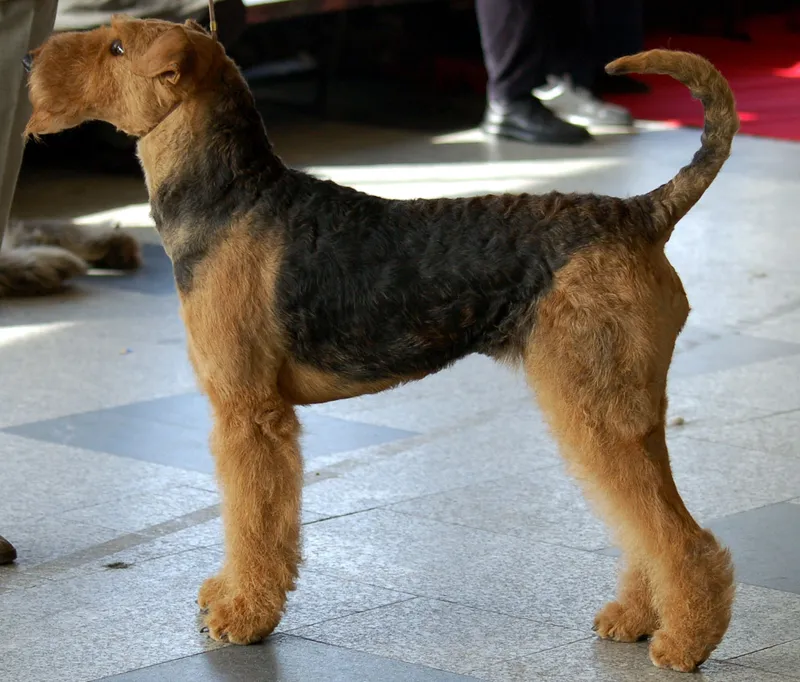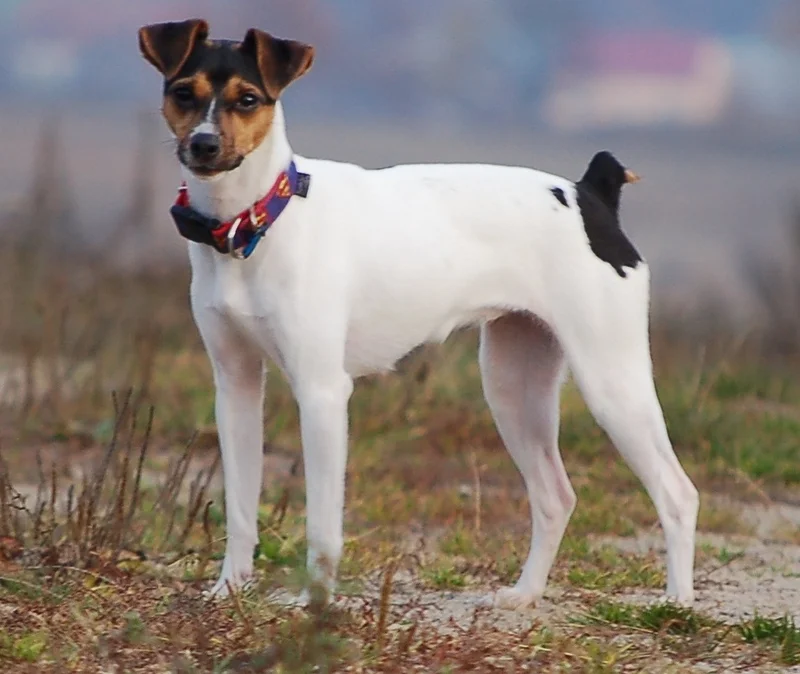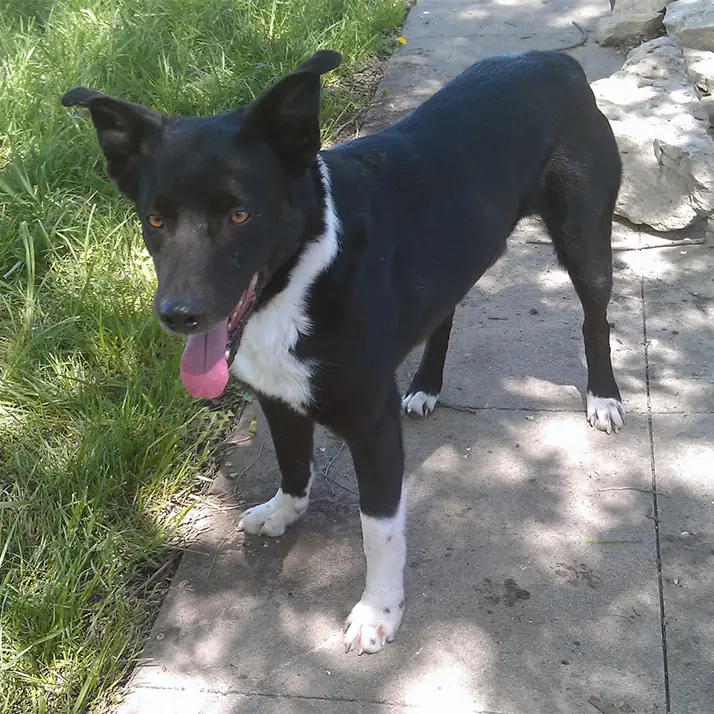Gull Terrier
The Gull Terrier, or Kohati Gultair, is a loyal and protective medium-sized dog from Pakistan, known for its agility and strong guarding instincts.
Overview
🐕Breed Overview
✨Key Traits
💡What Makes Gull Terrier Special
Gull Terriers are characterized by their strong jaw and muscular build, which contribute to their reputation as formidable protectors. Their loyalty to their families is unmatched, and they often form strong bonds with their owners.
They are agile and quick, making them adept at various physical activities. Their intelligence allows them to excel in training, but they require firm leadership to prevent any aggressive tendencies.
Socialization from a young age is crucial to ensure they are comfortable around other dogs and people. Their protective instincts make them excellent guard dogs, always alert and ready to defend their loved ones.
The Gull Terrier, also known as the Kohati Gultair, is a medium-sized dog breed originating from Pakistan, closely related to the English Bull Terrier. With a smooth, broad-shaped head and erect ears, these dogs are primarily white, often with slight black dots. Known for their loyalty and protective nature, Gull Terriers make excellent family companions and guard dogs.
Historically bred for bear baiting and dog fighting, they have transitioned to roles as loyal protectors and skilled hunters, particularly of wild boars and foxes. Their intelligence and agility make them easily trainable, but they require firm leadership and consistent training to thrive. Socialization from an early age is crucial to ensure they are well-adjusted and comfortable around strangers and other animals.
While they are generally good with children, supervision is recommended around unfamiliar kids and pets. With proper care, training, and exercise, Gull Terriers can be loving and devoted family members, known for their speed, accuracy, and unwavering loyalty.
🎉Fun Facts
Despite their fierce reputation, they can be gentle and affectionate with their families.
Gull Terriers are known for their exceptional speed and agility, making them excellent at dog sports.
They have a strong guarding instinct and will alert their owners to any potential threats.
Breed Characteristics
Family & Friends
Good Behavior
Get Up & Go
Household Harmony
Temperament & Personality
✨Key Traits
🐕Core Temperament
Gull Terriers are known for their protective and loyal temperament. They are naturally wary of strangers, making them excellent guard dogs.
Their intelligence and agility contribute to their trainability, and they thrive under firm, consistent leadership. While they are good with children in their families, they should be supervised around unfamiliar kids and pets.
Early socialization is essential to help them develop a well-rounded personality. With proper training and socialization, Gull Terriers can be friendly and well-adjusted dogs that are devoted to their families.
💫Personality Profile
Gull Terriers are known for their loyalty and protective nature. They are intelligent and agile, making them quick learners and excellent companions.
While they can be wary of strangers, they are affectionate with their families and enjoy spending time with their owners. Their playful nature makes them great with children, although supervision is recommended around unfamiliar kids.
They thrive on structure and consistent training, which helps channel their energy positively. With proper socialization, they can be well-adjusted and friendly dogs, but they may exhibit aggression towards other non-canine pets.
🔊Vocal Tendencies
Gull Terriers have a moderate barking tendency. They will bark to alert their owners of any perceived threats or unusual occurrences.
While they are not excessive barkers, their vocalizations can increase when they feel their territory is being encroached upon or when they are excited. Early training can help manage their barking behavior, ensuring they only bark when necessary.
Their vocalizations can range from alert barks to playful yips during playtime, showcasing their expressive nature.
Affection & Social Traits
Energy & Activity
Communication Style
Care Requirements
🏃♂️Exercise Requirements
Daily Exercise
Gull Terriers are energetic and agile dogs that require a significant amount of exercise to maintain their physical and mental health. Ideally, they should engage in at least 60 to 90 minutes of vigorous activity each day. This can include activities such as brisk walks, running, playing fetch, or engaging in dog sports like agility or obedience training.
It's important to provide both physical and mental stimulation, as these dogs are intelligent and thrive on challenges. For puppies, shorter, more frequent exercise sessions are recommended to prevent overexertion, while adult dogs may enjoy longer, more intense workouts. Senior Gull Terriers may require less intense exercise, but regular activity is still crucial to prevent weight gain and maintain mobility.
Insufficient exercise can lead to behavioral issues such as destructiveness or excessive barking, as well as health problems like obesity.
Preferred Activities
🏠Living & Adaptability
Space Requirements
Gull Terriers are medium-sized dogs that require ample space to thrive. They do well in homes with large yards where they can run and play freely.
However, they can adapt to smaller living spaces, such as apartments, provided they receive sufficient daily exercise and mental stimulation. Owners in smaller spaces should ensure they have access to parks or open areas for exercise.
It's essential to create a structured environment to prevent boredom and potential destructive behavior, as these dogs need to be kept engaged and active.
Climate Preference
🍲Feeding Guide
Schedule
Food Types
Portion Size
Special Nutritional Needs
Gull Terriers do not have specific dietary restrictions, but it is essential to provide a balanced diet rich in protein to support their active lifestyle. Regularly monitor their weight and adjust portions accordingly to prevent obesity. Some individuals may have food sensitivities, so it's important to observe any adverse reactions to new foods.
✨Grooming Requirements
Grooming Overview
Gull Terriers have a short, smooth coat that requires minimal grooming. Regular brushing with a soft brush can help remove loose hair and keep the coat healthy.
Bathing should be done as needed, typically every few months or when they become particularly dirty. Regular nail trimming and dental care are also important to maintain overall health.
Their ears should be checked regularly for dirt and wax buildup, and cleaned as necessary to prevent infections.
Care Schedule
Brush weekly; bathe as needed; trim nails every 2-4 weeks.
Health Profile
⚕️Health Care
Regular veterinary care is crucial for maintaining the health and lifespan of Gull Terriers. Routine check-ups, vaccinations, and preventive treatments for parasites are essential.
Early detection of health issues can significantly improve treatment outcomes. Owners should also be vigilant about their dog's weight and overall condition, adjusting diet and exercise as needed to promote optimal health throughout their life stages.
Health Issues Overview
⏳Average Lifespan
Genetic Factors
Genetics play a significant role in the lifespan of Gull Terriers. Responsible breeding practices can help minimize hereditary health issues, such as deafness and skin conditions.
Potential owners should seek breeders who conduct health screenings and prioritize genetic diversity to ensure healthier puppies. Understanding the genetic background of a Gull Terrier can provide insights into potential health risks and longevity.
Living Conditions
Gull Terriers thrive in environments that provide ample space for exercise and play. A home with a secure yard is ideal, as it allows them to run and explore safely.
They do well in temperate climates but should be protected from extreme weather conditions. Regular interaction with family members and structured activities contribute to their overall well-being and longevity.
Dogs that receive consistent exercise and mental stimulation tend to live longer, healthier lives.
🏥Common Health Issues
Deafness
Warning Signs
🔬Diagnosis
Veterinarians typically diagnose deafness through behavioral tests and auditory examinations.
💊Treatment
There is no cure for congenital deafness, but training methods can be adapted to accommodate the condition.
📝Management Tips
Regular hearing tests are recommended, especially for puppies. Training should focus on visual cues and hand signals for communication.
Mange
Warning Signs
🔬Diagnosis
Diagnosis is made through skin scrapings and examination of the affected areas.
💊Treatment
Treatment typically involves topical or oral medications prescribed by a veterinarian.
📝Management Tips
Maintain good hygiene and regular veterinary check-ups to prevent infestations. Treatment may include medicated baths and topical treatments.
🛡️Preventive Care
🔬Hearing Evaluation
Hearing tests to assess auditory function and detect deafness early.
📅 At 8 weeks and annually thereafter.
🔬Skin Examination
Skin evaluations to check for signs of mange or other dermatological issues.
📅 Annually or as needed based on symptoms.
Training
🧠Intelligence & Trainability
💪Work Drive
Gull Terriers have a strong work drive and thrive when given tasks to complete. They enjoy activities that challenge their physical and mental abilities, such as agility training, obedience work, and interactive games.
Engaging them in structured activities not only satisfies their need for mental stimulation but also strengthens the bond between the dog and owner. Without sufficient engagement, Gull Terriers may become bored and exhibit destructive behaviors.
Providing them with jobs or tasks, such as guarding the home or participating in dog sports, can help channel their energy positively.
⚠️Training Considerations
Gull Terriers can exhibit behavioral challenges, particularly if they are not properly socialized from a young age. They may be wary of strangers and can display aggression towards unfamiliar dogs or non-canine pets.
To mitigate these challenges, early socialization is crucial. Exposing them to various environments, people, and other animals can help them develop a more balanced temperament.
Consistent training and positive reinforcement methods are essential to address any aggressive tendencies and to teach them appropriate behaviors. Owners should be prepared to invest time in training and socialization to ensure their Gull Terrier becomes a well-adjusted adult dog.
📝Training Tips
Training a Gull Terrier requires firm, consistent leadership and positive reinforcement techniques. They are intelligent and eager to please, making them relatively easy to train when approached correctly. Start with basic obedience commands and gradually introduce more complex tasks.
Socialization should begin early, exposing them to different people, environments, and other animals to prevent fear-based behaviors. Regular training sessions should be kept engaging and fun to maintain their interest. Owners should establish themselves as the pack leader to ensure the dog respects boundaries and follows commands.
It's important to be patient and consistent, as Gull Terriers can be strong-willed and may test limits if not properly guided.
History & Heritage
📜Origin Story
The Gull Terrier, also known as the Kohati Gultair, originated in Pakistan, specifically in the regions of Kohat and Punjab. Its roots can be traced back to the British colonial era when English Bull Terriers were introduced to the subcontinent.
These dogs were bred with local breeds to create a versatile and resilient dog that could adapt to the harsh conditions of the region. The breed was initially used for bear baiting and dog fighting, activities that were prevalent during that time.
However, as these practices became illegal, the Gull Terrier found a new purpose as a guard dog and family companion. Its loyalty and protective nature have made it a beloved breed among many Pakistani families, symbolizing strength and resilience.
⏳Development History
The Gull Terrier's development can be traced back to the British colonial period in the Indian subcontinent when English Bull Terriers were brought to the region by the British Army. These dogs were crossed with local breeds, resulting in the Gull Terrier, which possesses traits suited for the local environment and tasks.
Over time, the breed has evolved to become a skilled hunter and protector, known for its strength and agility. The Gull Terrier has been used in various roles, from hunting wild boars and foxes to serving as a loyal family companion.
Despite its historical ties to dog fighting, the breed has transitioned to a more domesticated role, focusing on companionship and protection.
🛡️Purpose & Historical Role
Historically, the Gull Terrier was bred for bear baiting and dog fighting, showcasing its strength and agility. However, with the prohibition of such activities, the breed has shifted its focus to serving as a guard dog and family protector.
They are known for their loyalty and protective instincts, making them excellent companions for families. Additionally, Gull Terriers have been used for hunting wild boars, foxes, and wolves, demonstrating their versatility and skill in various roles.
🏺Cultural Significance
The Gull Terrier holds a unique place in Pakistani culture, particularly in the Kohat and Punjab regions where it is bred. Historically, these dogs were used for bear baiting and dog fighting, practices that have since been outlawed.
Today, they are primarily valued as guard dogs, known for their loyalty and protective instincts. The breed's connection to the English Bull Terrier reflects a blend of British influence and local breeding practices, making it a symbol of both heritage and adaptability in Pakistan.
Their reputation as fierce protectors has made them popular among families seeking a reliable guardian, and they are often featured in local folklore and stories.
Conservation Status
This breed is less common but has stable populations in certain regions.









